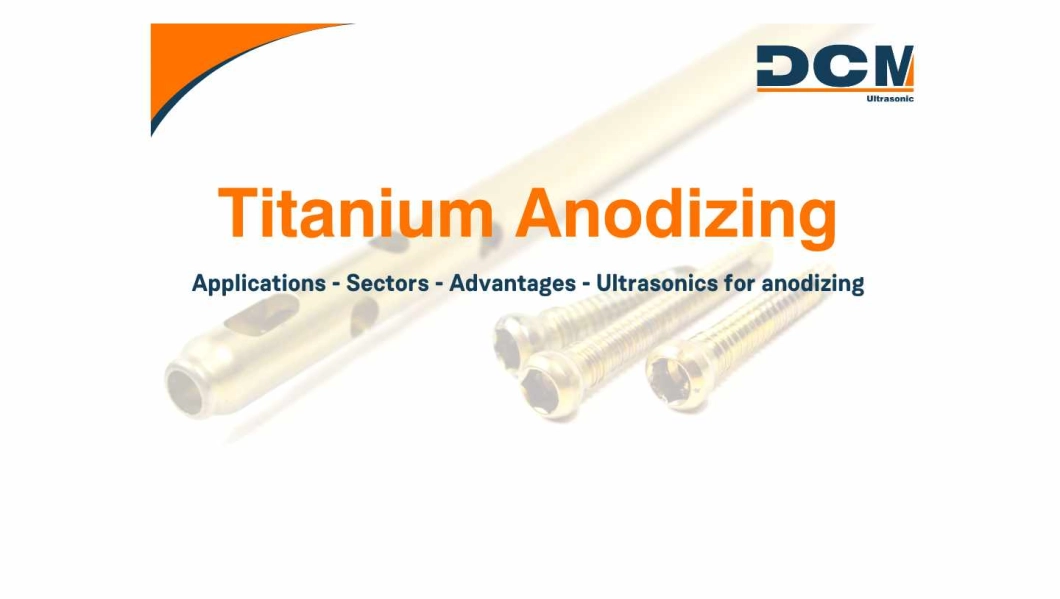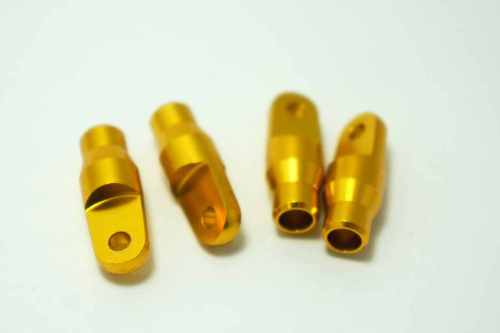Mon, 24 Feb 2025 08:51:03 +0100


Anodized titanium is used in multiple industries due to its functional and aesthetic advantages:
Titanium anodizing is applied to a wide variety of components, including:
Discover our ultrasound equipment
Titanium anodizing is an essential process in various industries that require resistant, biocompatible materials with aesthetic finishes. The integration of ultrasonic cleaning in this process improves the quality of anodizing, ensuring surfaces completely free of impurities before treatment.

News
Ultrasonic Anodizing of Titanium - Benefits and Applications
24 February de 2025
Titanium anodizing is an electrochemical process that improves the surface properties of this metal, providing it with greater corrosion resistance, better adhesion for coatings and a customizable aesthetic by varying the color of the anodized layer. This treatment is used in multiple industrial sectors, from aeronautics to medicine and jewelry.What is Titanium Anodizing?
Anodizing is a controlled oxidation process in which an electric current passes through titanium immersed in an electrolyte. This current generates an oxide layer on the surface of the metal whose composition and thickness depend on the process parameters, such as voltage and electrolyte composition. In the case of titanium, anodizing not only improves its physical and chemical properties, but also allows for the generation of a variety of colors without the need for pigments or coatings.Advantages of Titanium Anodizing
- Corrosion resistance: The oxide layer that is generated on the surface acts as a protective barrier against corrosive agents.
- Variety of colors without the use of dyes: Depending on the voltage applied, anodized titanium can take on shades from gold to blue, purple or green.
- Increased biocompatibility: In medical applications, anodizing improves integration with biological tissues and reduces the risk of adverse reactions.
- Better adhesion for coatings and adhesives: Facilitates the application of additional layers without the need for aggressive pre-treatments.
- Wear resistance: The anodized surface offers greater durability against abrasion and continuous use.

Applications of Titanium Anodizing
Anodized titanium is used in multiple industries due to its functional and aesthetic advantages:
- Aerospace: For structural parts and components of aircraft that require corrosion resistance and weight reduction.
- Medical sector: Prostheses, dental and orthopedic implants, where biocompatibility is a key factor.
- Jewelry and watchmaking: To achieve aesthetic finishes with vibrant colors without affecting the integrity of the material.
- Automotive and motorcycles: High-performance components that need rust protection and aesthetic improvements.
- Chemical industry: Processing and storage equipment that must withstand highly corrosive environments.
Titanium anodizing is applied to a wide variety of components, including:
- Industrial Screws & Fasteners
- Surgical and dental instruments
- Motorcycle and automobile chassis and structures
- Decorative and structural pieces in architecture
- Electronic and communication components
Use of Ultrasonics in Titanium Anodizing
The anodizing process requires rigorous cleaning of the titanium surface prior to treatment. Ultrasonic cleaning has proven to be one of the most effective solutions for this step, as it ensures the complete removal of contaminants without damaging the integrity of the metal.
Advantages of Using Ultrasonics in Titanium Anodizing
- Deep and uniform cleaning: Ultrasonic cavitation allows you to reach every corner of the part regardless of its geometry.
- Total elimination of organic and inorganic residues: Greases, oils, oxides and microscopic particles that could affect the quality of the anodizing are removed.
- Non-abrasive process: Unlike mechanical methods, ultrasound does not cause wear or alterations in the structure of the titanium.
- Reduction in the use of harsh chemicals: Decreases the need for solvents and corrosive agents that could generate hazardous waste.
- Optimization of production time: Ultrasonic cleaning speeds up the preparation of parts, reducing the total time of the anodizing process.
Ultrasonics vs. Other Cleaning Methods
- Conventional chemical cleaning: Although effective, it can be expensive and generate hazardous waste that requires special handling.
- Sandblasting or abrasives: It can damage the surface of the titanium and affect the final finish.
- Manual cleaning with solvents: This is less efficient and can leave behind unwanted residue.
- Ultrasound: More efficient, safe and fast method, guaranteeing deep cleaning without compromising the integrity of the material.
Discover our ultrasound equipment
Titanium anodizing is an essential process in various industries that require resistant, biocompatible materials with aesthetic finishes. The integration of ultrasonic cleaning in this process improves the quality of anodizing, ensuring surfaces completely free of impurities before treatment.
